
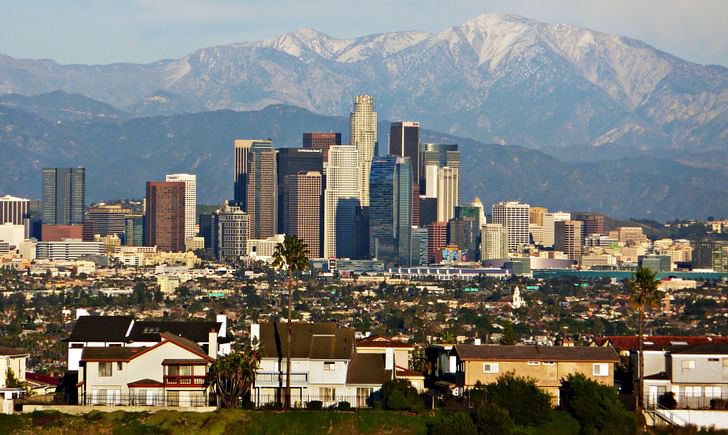
It has become common practice for architects to be asked what their favorite buildings are. After all, it is the obvious question. That being said, the majority of people walking into a building aren’t architects and they certainly have something to say on the matter! In that vein, we have decided to reach outside the field to find out what other types of professionals have to say about the buildings in their city.
Today, we have asked nine urban planners working in Los Angeles what their favorite buildings are. As urban planners, these professionals often work closely with architects to help bring about projects, and their policies, regulations, and codes certainly bring about shifts and changes to the landscape of the city. Due to their relationship with architecture, we thought it would be interesting to get their perspective on what makes a building important to them. Their choices are varied but one thing these answers all seem to have in common: an emphasis on the site's relationship to the user, the community, and of course, the city. It's a good reminder that the aesthetic qualities of a building are only one factor in what makes it meaningful for those that it encounters.
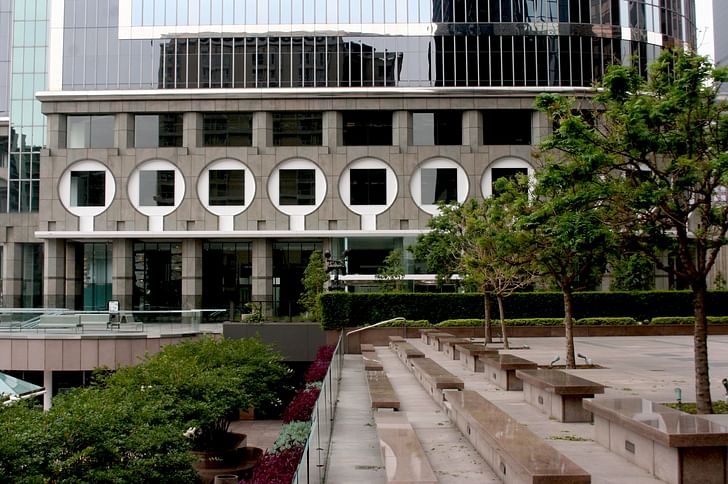
The Watercourt at California Plaza
Designed by Arthur Erickson Architectural Corporation
Completed in 1985
"The Watercourt at California Plaza is not a particularly great example of design, but when it is full of 5,000 people, the most diverse performing art audience in America, dancing to world music, for free, under the stars, it is my favorite example of what is best about Los Angeles."
- Dan Rosenfeld, California Co-Chair of Trust for Public Land
You can view upcoming events here.
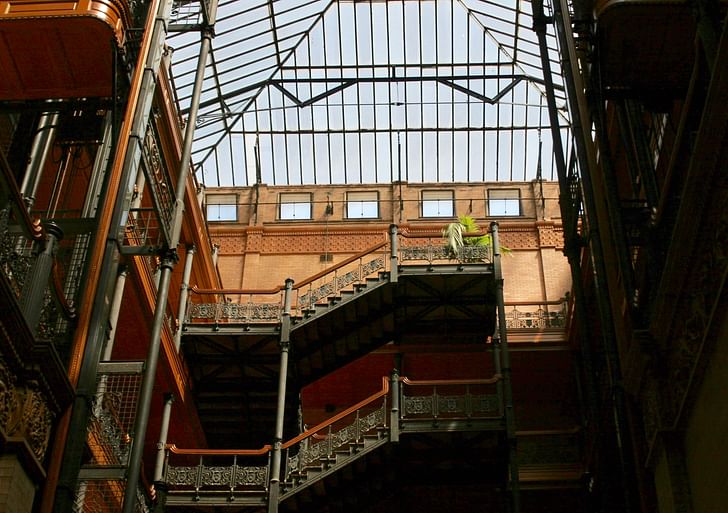
The Bradbury Building
Designed by George Wyman and Sumner Hunt
Completed in 1893
"My favorite building is the Bradbury Building, at 3rd and Broadway, in Downtown Los Angeles. My first planning job was in that building, on the 4th floor, near that back. Everyday I entered the building, it lifted my spirits. The atrium space has a quiet light that contrasted with what was a cacophony of noisy buses, loud music, and bustling people on the street. The building was watched over by the Anthony Quinn in the 'Pope of Broadway' mural on 3rd street. The bathrooms didn't work well but the management offered a happy hour on the second floor every Friday—a very worthwhile trade. The Bradbury Building has had cycles of decline and renewal, but to me it represents new beginnings and the resilience of Los Angeles."
- Richard Willson, Professor and Chair of the Department of Urban and regional Planning at Cal Poly Pomona

Bullocks Wilshire
Designed by John Parkinson, Paul László and Frank Donald D. Parkinson
Built in 1929
"The patina on the bronze tower gives it the kind of grace reserved for glamorous things that have had enough time to age, like wrinkles on a grandmother that show she's lived. The motor court in the 'rear' actually serves as a front door to people arriving by car. I used to think it was anti-pedestrian, but now I like it—symbolic of an age of development of LA's 'linear downtown' along Wilshire Boulevard."
- Jason Neville, Planning and Redevelopment Strategist for the City of Los Angeles
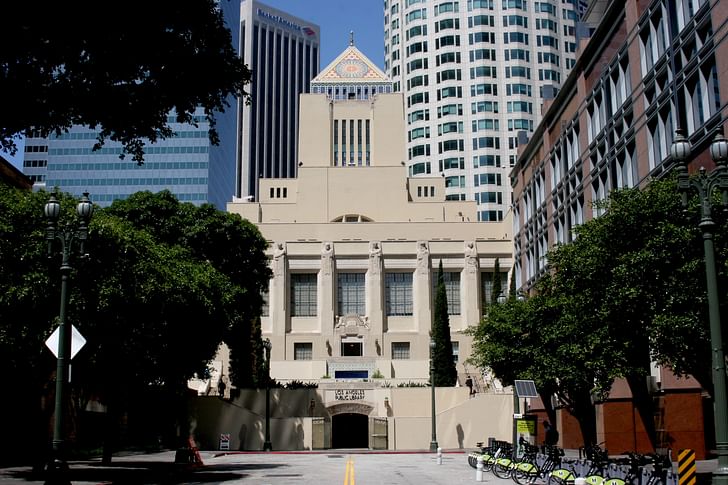
Downtown Central Library
Designed by Bertram Grosvenor Goodhue
Completed in 1926
"In addition to being one of our best Art Deco buildings, it's a great example of how old and new can coexist and make for a better built environment. Rather than being overwhelmed by the surrounding high-rise construction, the library's lower height profile makes it seem more like the crown jewel in the heart of a modern city. Its unique pyramid shaped roof helps it stand out from its neighbors, particularly when viewed from Hope Street."
- Steven Sharp, editor and co-founder of Urbanize LA.

The Los Angeles Theatre
Designed by S. Charles Lee
Built in 1931
"I'm always uncomfortable choosing my favorite building—it feels like being asked to choose one's favorite child—but, if I have to select just one, I'll go with the Los Angeles Theatre, which embodies our city even within its name. I'm often surprised by how many Angelenos don't realize our city has the largest historic district of movie palaces in the world—a dozen opulent theaters built between 1911 and 1931 along Downtown's Broadway. The Los Angeles Theatre, with its spectacular mirrored lobby with chandeliers and grand staircase, lower-level ballroom, soundproof 'crying rooms' for mothers and babies, and a ladies restroom with different-colored marble in every stall, was architect S. Charle Lee's over-the-top masterpiece. It's best experienced with a packed house of 2,000 at one of the Los Angeles Conservancy's 'Last Remaining Seats' film series."
- Ken Bernstein, Principal City Planner in Historic Resources Department
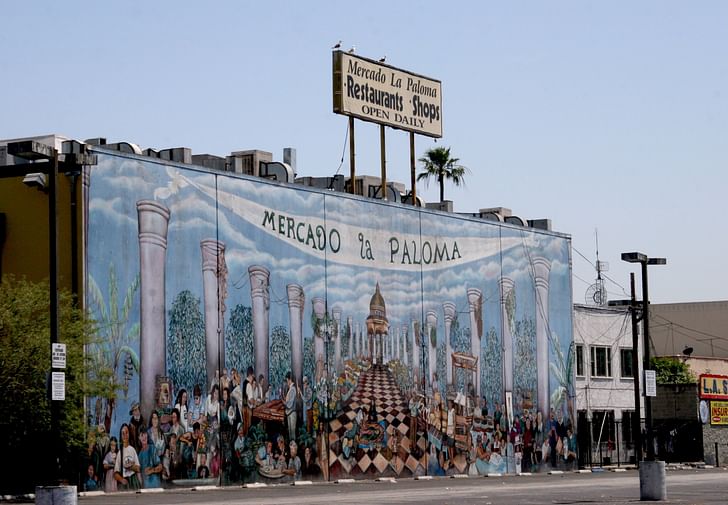
Mercado La Paloma
Project by Esperanza Community Housing Corporation
Mural by Elizabeth Eve King
Opened in 2001
"The magic of the Mercado la Paloma starts outside the building in the artfully decorated parking lot and the recently redesigned street entrance. The real excitement comes when one enters the high-ceilinged first floor of this former garment factory. The space is filled with competing conversations from tables spread throughout as well as smells floating in from the seven restaurants. Much like the Mexican mercados on which it is based, the Mercado combines the social amenity of eating with shopping and community activities. The community room in the back has held a myriad of events and discussions, while the second floor is home not only to Esperanza but also a group of very active nonprofit organizations. The Mercado is a remarkable example of adaptive reuse that provides community services and support, which is why it is one of my favorite LA places."
- David Sloane, Professor of Urban Planning at USC's Price School of Public Policy

The Los Feliz Towers
Designed by Daniel, Mann, Johnson and Mendenhall
Built in 1966
"I have a soft spot for buildings that can no longer be built because their entire species was banned. Some, like bungalow courts, were unintentionally suppressed by parking requirements that came in the 1930s. Others, which I think of as 'backlash buildings', were intentionally singled out and outlawed for being too big or ugly. The Los Feliz Towers are an example, or many, many, nondescript apartments built in areas that have since been down-zoned. They're like fossils from a forbidden city."
- Mark Valliantos, co-author of The Next Los Angeles: the Struggle for a Livable City and Director of LAplus.
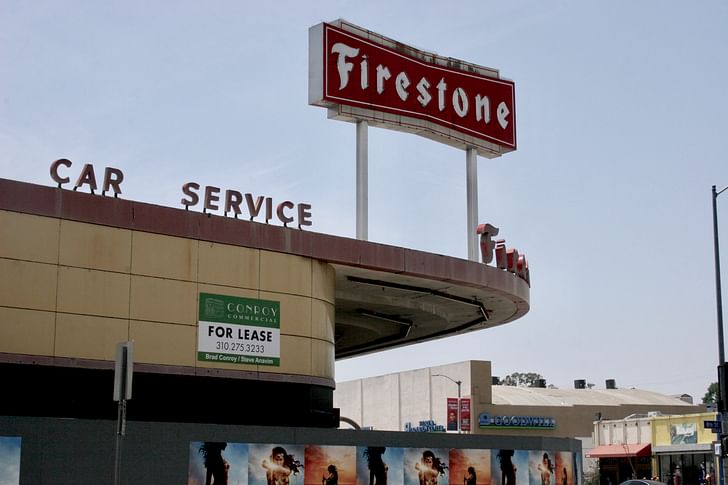
Former Firestone Tire store at 8th and La Brea
Designed by the structural engineer, R.E. Ward
Built in 1937
"One of Los Angeles' biggest offenses against architecture is its lack of T intersections, plazas, and other opportunity to actually see buildings. You could rebuild the Taj Mahal on Wilshire Boulevard and everyone would drive right past it. The former Firestone Tire store on La Brea (soon to be a new food hall) is one of the few buildings in LA that genuinely turns my head. In classic Streamline Moderne fashion, it has a deliberate combination of strength, sexiness, understatement, and authenticity. Great design can ennoble even the most banal uses, even on a five-lane boulevard."
- Josh Stephens, contributing editor of the California Planning and Development Report
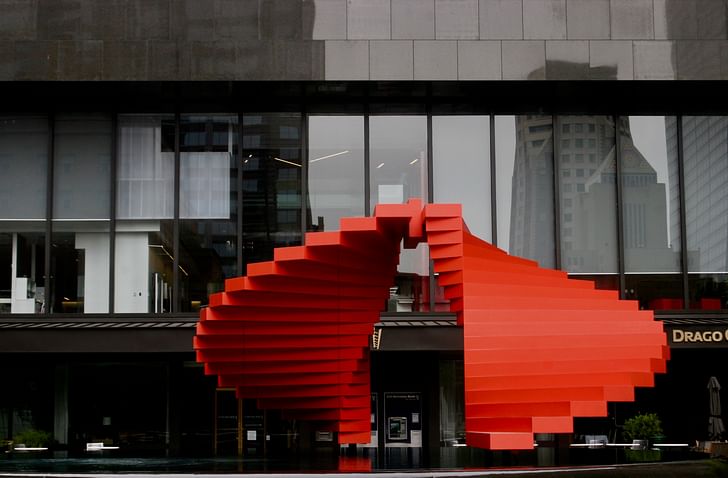
City National Plaza
Designed by Albert C. Martin & Associates
Built in 1972
"One of my current favorite places in Los Angeles is the revamped City National Plaza in Downtown. Nestled between two modernist towers, sitting in front of the beautiful LA offices of Gensler, the space is a perfect mix of scales and activity. It is surrounded by dramatic skyscrapers but made intimate by accessible design and comfortable furniture. It feels convenient and inviting, allowing for a moment of respite of a quick meeting, but is also charged with the energy of work and buzz of the city. Gensler also designed a very cool kiosk for Nice Coffee, which added just the right amenity to make it a regular stop during your day."
- Nick Griffin, Vice President of Economic Development for the Downtown Center BID
No Comments
Block this user
Are you sure you want to block this user and hide all related comments throughout the site?
Archinect
This is your first comment on Archinect. Your comment will be visible once approved.